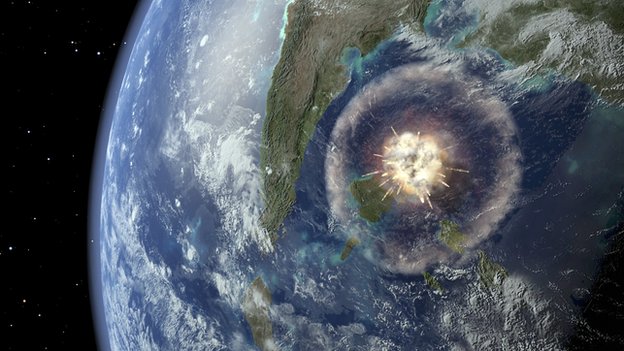How did life spread in the early solar system? A new US study proposes that the Chicxulub Asteroid, the asteroid that wiped out the dinosaurs, may have catapulted life to Mars and the moons of Jupiter.

Based on the rock size and mass they calculated that the Chicxulub impact was strong enough to fire Earth chunks all the way to Europa. Thus, plenty of potentially life-bearing rocks also made their way to Mars, which may once have been habitable.
Tis group of US researchers found that rock capable of carrying life has likely transferred from both Earth and Mars to all of the terrestrial planets in the solar system and Jupiter.
As presented in their paper, published in Astrobiology, Earth rocks big enough (3m diameter or larger) to support life made it to Venus (26,000,000 rocks), Mercury (730,000 rocks), Mars (360,000 rocks), Jupiter (83,000 rocks), Saturn (14,000 rocks), Io (10 rocks), Europa (6 rocks), Titan (4 rocks) and Callisto (1 rock).
Well, now, any missions to search for life on Titan or the moons of Jupiter will have to consider whether biological material is of independent origin, or another branch in Earth’s family tree! Exciting. [BBC News]











